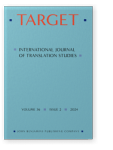Vol. 36:2 (2024) ► pp.245–275
A competence matrix for machine translation-oriented data literacy teaching
This article presents a matrix of competence descriptors aimed at machine translation-oriented data literacy teaching. This competence matrix constitutes the didactics-facing side of the DataLitMT project, which develops learning resources for teaching relevant components of data literacy in their translation-specific form of professional machine translation (MT) literacy to BA and MA students in translation and specialised communication. After highlighting the increasing relevance of both professional MT literacy and data literacy in the context of Translation Studies and professional translation, the article presents and discusses a professional MT literacy framework and an MT-specific data literacy framework, which serve to structure the two frames of reference relevant to this article. Then, the article provides a detailed discussion of the competence matrix developed based on the two frameworks sketched previously. This discussion is intended to show how the individual dimensions and sub-dimensions of data literacy were linked to relevant (sub-)dimensions of professional MT literacy and translated into corresponding competence descriptors. To conclude, the article presents an example of a learning resource for MT-oriented data literacy teaching developed based on the descriptors of the competence matrix.
Article outline
- 1.Introduction
- 2.Providing internal structure to the concepts of professional MT literacy and data literacy
- 2.1A professional MT literacy framework
- 2.2An MT-specific data literacy framework
- 3.Combining professional MT literacy and data literacy in the DataLitMT competence matrix
- 3.1Competence descriptors at the interface of data context and MT
- 3.2Competence descriptors at the interface of data planning and MT
- 3.3Competence descriptors at the interface of data collection/production and MT
- 3.4Competence descriptors at the interface of data evaluation and MT
- 3.5Competence descriptors at the interface of data use and MT
- 4.Example of a learning resource of the DataLitMT project
- 5.Conclusions
- Acknowledgements
- Notes
-
References
